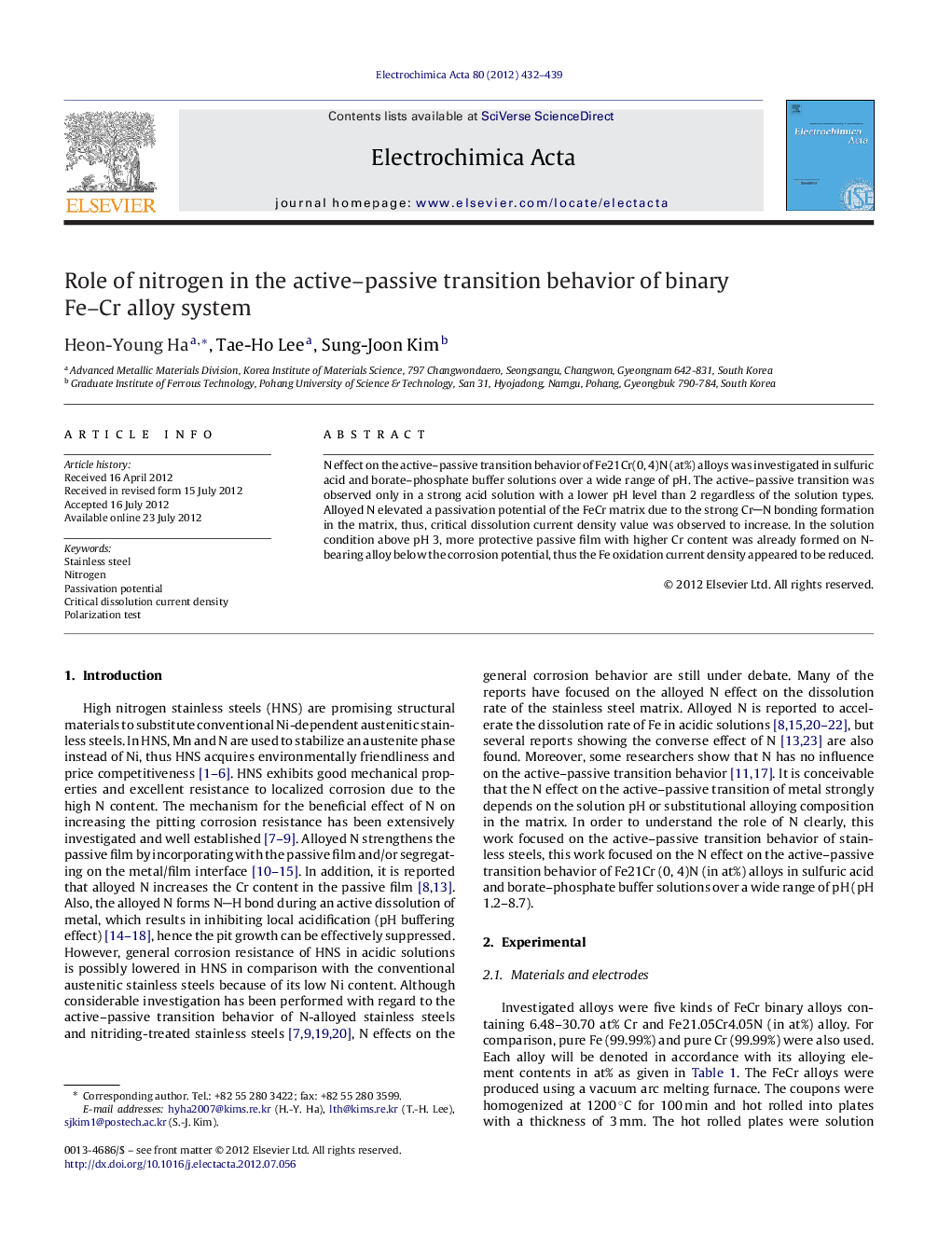| Article ID | Journal | Published Year | Pages | File Type |
|---|---|---|---|---|
| 187920 | Electrochimica Acta | 2012 | 8 Pages |
Abstract
N effect on the active–passive transition behavior of Fe21Cr(0, 4)N (at%) alloys was investigated in sulfuric acid and borate–phosphate buffer solutions over a wide range of pH. The active–passive transition was observed only in a strong acid solution with a lower pH level than 2 regardless of the solution types. Alloyed N elevated a passivation potential of the FeCr matrix due to the strong CrN bonding formation in the matrix, thus, critical dissolution current density value was observed to increase. In the solution condition above pH 3, more protective passive film with higher Cr content was already formed on N-bearing alloy below the corrosion potential, thus the Fe oxidation current density appeared to be reduced.
Related Topics
Physical Sciences and Engineering
Chemical Engineering
Chemical Engineering (General)
Authors
Heon-Young Ha, Tae-Ho Lee, Sung-Joon Kim,
